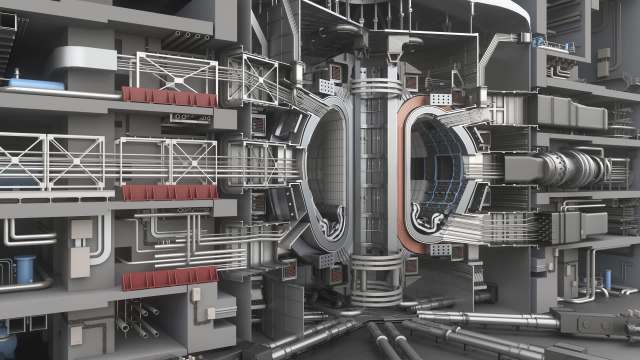AI Revolutionizes Nuclear Energy

AI Revolutionizes Nuclear Fusion: A Leap Towards Clean Energy
Nuclear fusion, long hailed as a potential game-changer in the quest for clean and sustainable energy, is getting a significant boost from artificial intelligence. Recent advancements demonstrate how AI is being harnessed to overcome some of the major hurdles that have hindered the commercialization of fusion power. These breakthroughs offer promising pathways toward a future where energy production is both efficient and environmentally friendly.
Tackling the Challenges of Nuclear Fusion
While nuclear fusion holds immense promise as a zero-carbon energy source, replicating the process that powers the sun on Earth is an incredibly complex undertaking. Nuclear reactors, designed to confine and control superheated plasma, are inherently prone to instabilities and disruptions. These disruptions can not only damage the reactor but also interrupt the energy generation process.
To address these challenges, scientists are increasingly turning to AI. Two recent studies highlight the power of AI in enhancing the stability and reliability of nuclear fusion reactors. These AI models are designed to tackle distinct, yet interconnected, aspects of reactor operation: predicting disruptions and monitoring plasma conditions.
AI as a Predictive Guardian
One of the most significant advancements involves the development of an AI model capable of predicting plasma disruptions. This model acts as an early warning system, analyzing real-time data from the reactor to identify potential instabilities. By recognizing patterns and anomalies that precede disruptions, the AI can provide scientists with crucial milliseconds to take corrective actions. These actions might include adjusting magnetic fields or injecting stabilizing agents into the plasma, preventing a full-blown disruption and ensuring the continuous operation of the reactor.
The ability to predict disruptions is paramount for several reasons. First, it safeguards the reactor from potential damage, reducing downtime and maintenance costs. Second, it allows for more stable and consistent energy production. Third, it provides researchers with valuable insights into the complex dynamics of plasma behavior, paving the way for improved reactor designs and control strategies.
Real-Time Plasma Monitoring with AI
The second AI model focuses on monitoring the state of the plasma itself. By analyzing a multitude of parameters, such as temperature, density, and magnetic field configurations, the AI can classify plasma conditions in real time. This detailed understanding of the plasma's behavior allows scientists to optimize reactor settings, ensuring that the fusion reaction is proceeding efficiently and safely.
The real-time monitoring capabilities of this AI model are particularly valuable for identifying subtle changes in plasma conditions that might otherwise go unnoticed. By detecting these changes early on, scientists can proactively adjust reactor parameters to maintain optimal performance and prevent potential problems. This proactive approach is essential for maximizing energy output and minimizing the risk of disruptions.
The Significance of AI in Fusion Research
The integration of these AI tools represents a significant step forward in fusion energy research. By enhancing the stability and reliability of nuclear fusion reactors, AI is helping to bridge the gap between scientific theory and practical application. These advancements not only contribute to safer experimental environments but also provide valuable insights into the complex dynamics of plasma behavior.
Towards a Sustainable Energy Future
The growing global demand for energy, coupled with the urgent need to transition away from fossil fuels, has made the development of clean and sustainable energy sources a top priority. Nuclear fusion offers a compelling alternative to traditional energy sources, with the potential to generate massive amounts of energy without producing greenhouse gas emissions or long-lived radioactive waste.
Unlike nuclear fission, which involves splitting atoms, nuclear fusion involves fusing atoms together, releasing vast amounts of energy in the process. The fuel for fusion, typically isotopes of hydrogen, is abundant and readily available, making it a potentially inexhaustible energy source. If successfully commercialized, fusion power could revolutionize the energy landscape, providing a clean, reliable, and affordable source of electricity for generations to come.
Overcoming Obstacles and Paving the Way for Innovation
While nuclear fusion technology is still in its early stages of development, advancements like these AI models are paving the way for more innovative fusion research. The integration of AI into fusion research is not just about improving reactor performance; it's about accelerating the pace of discovery and unlocking the full potential of this transformative energy technology.
As AI continues to evolve and become more sophisticated, its role in fusion research will only grow. From optimizing reactor designs to developing advanced control systems, AI has the potential to revolutionize every aspect of fusion energy development. These recent AI breakthroughs are a foundational step toward fully intelligent control systems in future fusion energy facilities. They mark a significant stride towards a future where fusion power can play a central role in meeting the world's growing energy needs in a sustainable and responsible manner.
